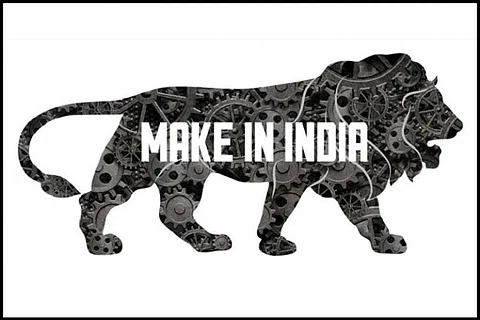

By Rabindra Kumar Jena
With the big bubble of success of the Make in India campaign, most of us usually do not dig deeper to understand what the bubble is actually made up of. The campaign, which aimed to boost the manufacturing industry in India by inviting foreign investors to “Make in India” is yet to see tangible results. Ignorance of relevant data and deceiving aggregated data make the sugar coated results. After about two and a half years since the launch, let us do some deep diving into data to assess where we are headed.
After holding numerous events and foreign engagements with investors and governments, it seemed like investments from abroad to Make in India were no longer a far-fetched dream. In line with the hopes of the people, the aggregated numbers suggested much of what was thought of. The FDI inflows to India jumped 27% from 34.9 billion in 2014-15 to an all-time high of $45 billion in 2015-16. However, one needs to understand the components that make this aggregation before making a toast. If we dissect these numbers we see a different story for the industry sector. To start with, the proportion of total FDI going into the industry has actually fallen from 45.7% in 2013-14 to 42.6% in 2014-15 and then dived drastically to 35.3% in 2015-16.

Source: DIPP (Aggregated figure for Industry includes 16 industry groups as computed by the DIPP)
Having seen the share of industry in the total FDI, a closer look into sectors within the industry, especially the manufacturing sector, would give us more clarity. Among the 25 focus sectors that were listed in Make in India, some of them are Automobile and Auto components, Construction, Pharmaceuticals, Chemicals, IT and BPM etc. The RBI data on sectoral FDI inflow reveals that the investment in these manufacturing sectors has actually fallen post the launch of the campaign. Additionally, only 3-4 sectors have shown increments out of the top ten which include only one of the focus sectors.

Source: DIPP, RBI
The reason behind the bloated FDI growth therefore, is largely driven by the services sector which makes up 18% of the total FDI. Although some of the focus sectors like construction, drugs and pharma, automobile are in the top ten sectors attracting highest FDI, their respective investments are have fallen compared to previous years.
The other objective behind the Make in India initiative was to focus on job creation and skill enhancement by expansion of these focus sectors through FDI. On the contrary, the pace of job creation has slowed down and the lowest numbers have been witnessed since 2009 in the past three years.

Source: Firstpost (April, 2016), TheWire (May, 2017), Labour Bureau, Lok Sabha
(Note*: The no. of jobs created in 2016 is from April to December)
Broadly, there has been a declining trend of job creation since the global financial crisis in 2008. Also, the number of jobs created by some of the priority manufacturing sectors in the campaign like Textiles, Leather, Automobile, and Information Technology - employment generation there too has dipped by alarming numbers.

Source: Lok Sabha Unstarred Question No. 635 on 20.7.2016
An overall picture therefore suggests that both the motives of boosting FDI in manufacturing and creating more jobs are yet to succeed. It is time we realize that increase in the FDI in manufacturing or even Domestic Investment for that matter depends on various factors like availability of skilled labor, ease of doing business and most importantly stability in the economy and not just on branding and PR activities. Sound macro fundamentals coupled with consistent economic policies and reduced uncertainties like demonetization are pre-requisites to attract investments in any economy.
(The author, R K Jena, is a BJD Member of Parliament from Balasor, Odisha. The views expressed in this article reflect the views of the author. The author acknowledges the rich inputs by his intern Mr. Geet for this article)